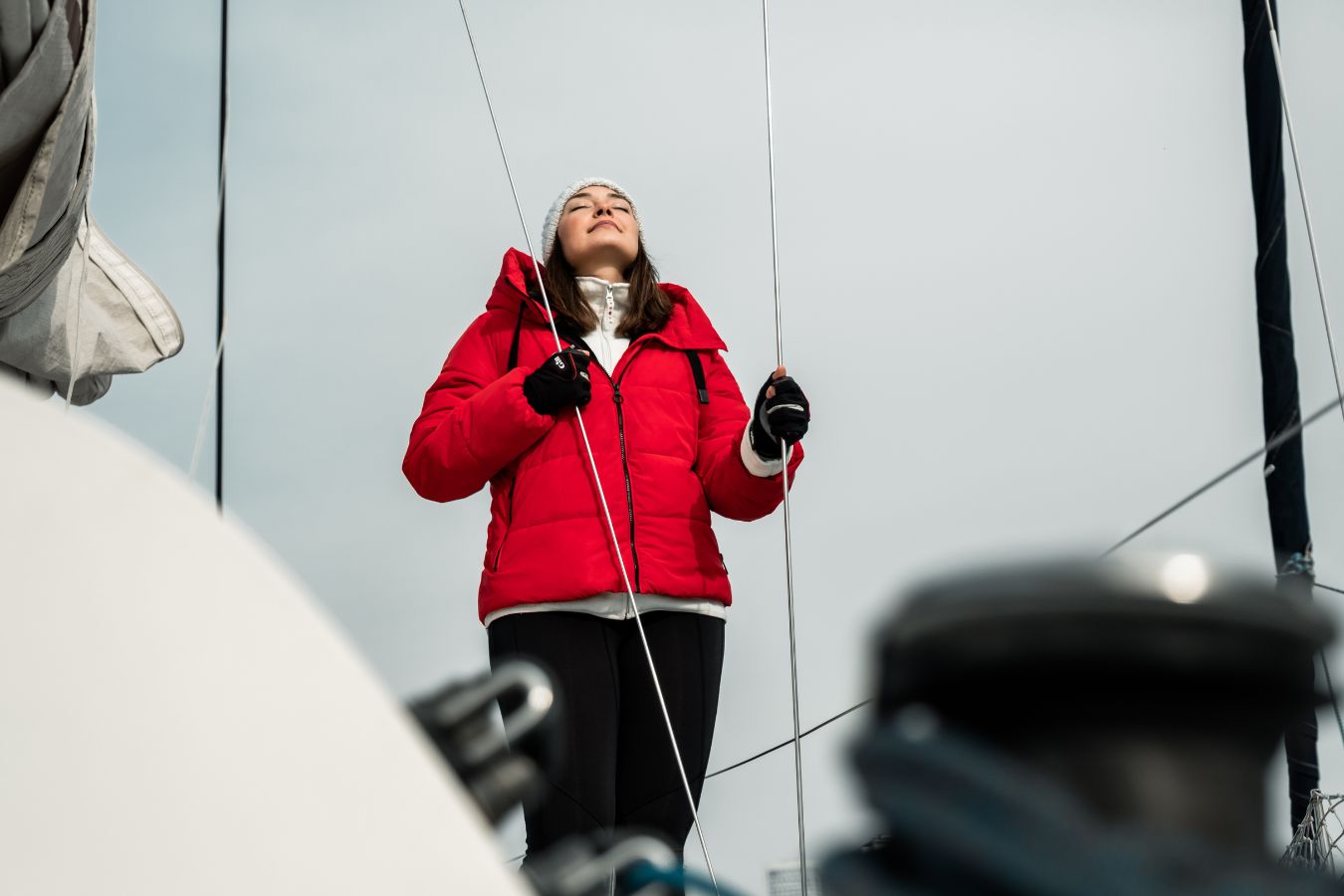Winter sailing: what clothing, equipment and safety equipment you should have
Winter need not be a barrier to enjoying the sea. Sailing in this season offers tranquil scenery, less traffic in harbours and a unique sense of adventure. However, it also means tougher conditions. This article explains how to prepare yourself with the right clothing, essential equipment and safety measures for safe winter sailing.
Technical clothing: layering, protection and comfort
Dressing appropriately is vital. The layering system will allow you to adapt to changes in temperature and humidity:
- Base layer: thermal clothing that wicks away body moisture (polyester or merino wool).
- Middle layer: fleeces or softshells to keep warmth in.
- Outer layer: waterproof, breathable and resistant jacket and trousers (Gore-Tex).
Don’t forget a warm hat, neoprene gloves and thick socks: hypothermia is the main risk. See our Basic Boat Maintenance Tips guide for technical clothing recommendations that also apply to equipment care.
Slip-resistant and safe footwear
The floor of the boat may be wet or icy. Wear wellies with non-slip soles and insulation. Deck boots with thermal socks are an excellent option. Check out the article What is a boat’s draft if you want to know how a clean, dry hull affects wave behaviour and slip prevention.
Essential equipment
- Automatic life jackets with harness and strobe light.
- Heating system on board, with adequate ventilation.
- Radar and AIS, essential when visibility decreases.
- LED navigation lights, for emergencies and adverse conditions.
- Upgraded liferaft and thermal blanket in watertight bag.
For more information, check out [antifouling and winterising] services as part of your onboard winter strategy.
Cold navigation tips
- Plan shorter routes with sheltered harbours.
- Check the daily weather forecast.
- Increases safety distance.
- Communicate your plan to someone ashore or use the MMSI system (see article ‘What is a ship’s MMSI?’).
Winter preparedness checklist
- Checking the electrical system and batteries.
- Check engine antifreeze level.
- Cleaning of tanks and circuits.
- Control of seals, hatches and watertightness.
Complete this process by following our maintenance section: How to maintain and store your boat over winter.
Final recommendations
Sailing in winter requires planning, the right equipment and respect for the environment. With the right preparation, it is one of the most rewarding experiences the sea has to offer.
For guidance on first voyages, read ‘First steps in sailing’ in our blog.
You can also consult this technical guide from Sail Magazine.
Other news that may interest you
- How the automatic bailing system works and why it is vital
- Winter sailing: what clothing, equipment and safety equipment you should have
- How to choose a satellite communication system for your boat
- Monthly maintenance checklist for your Crownline
- 5 perfect base ports for your Crownline on the Costa Blanca

